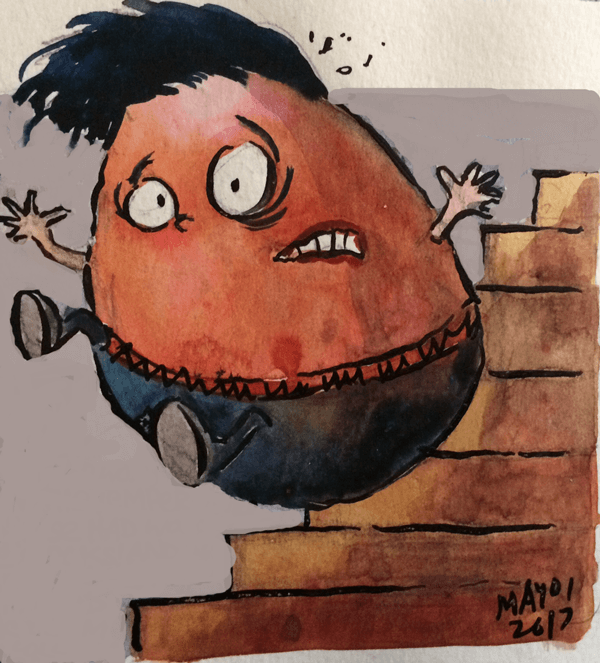What do you do when your project stalls?
How do you get the momentum back? Is there a way to kickstart the stalled project? Or should we give up?
Imagine you've missed sunrise for the past 300 days. Would that mean you'd give up on seeing sunrise forever? We know the answer to the question, don't we? Even if we snoozed right past a few hundred sunrises, it's possible for us to wake up on the 301st day and bask in the glow of the morning sun.
And yet, when it comes to projects, we often treat a stalled project as a form of failure. Why do we follow this crazy method of giving up? And how do we restart a stalled project? Let's find out, shall we?
Right click below to save this episode.
Re-release: How To Restart A Stalled Project: The Middle Of The Project Method
Original: How To Restart A Stalled Project: The Middle Of The Project Method
All projects—both personal and business projects run into difficulty at some point in time.
Maybe you're writing a book. You start with gusto, and then somewhere into chapter two, you get tired, or lost, or just distracted. The book comes to a sudden stop. You're aware you need to get back into writing it, but it would mean starting from the top, wouldn't it? No, it doesn't. What you should do is start from the middle instead.
Where does it say you have to go back to the very beginning?
If anything, the trip back to the start is almost always a doomed one. You realise how little you've progressed, and it becomes relatively easier to procrastinate. You see the project as one big journey that can't be any good unless you get right back to the starting point. Yet, starting in the middle is a far more effective way to go about things.
Let's take an example with book, The Brain Audit.
The book starts with the introduction, then moves to the concept of the “seven red bags”. And from there it moves to Chapter 1—namely the “problem”. What should follow from that point is Chapter 2—”the solution”. Most of us would agree that the sequence is important when reading the book.
However, it's not as crucial when writing it. As a writer, I could easily have run out of steam and have a tough time moving sequentially ahead. Instead, I might be able to write another chapter a lot easier. Hence, if I moved to a chapter on “Objections” or “Testimonials”, would it jeopardise the project in any way?
Not any more than waking up for the sunrise on the 301st day.
Restarting a stalled project in the middle may seem like a daft idea. After all a project has a sort of sequence. To ignore the thread and start anywhere seems slightly ridiculous because there's no way to know if what you're doing will fit in the final scheme of things.
When you're moving ahead bit by bit, it feels like one of those trucks that lay quick-dry concrete on the roads. The concrete dries, the truck moves on and you have a road ahead of you. This middle of the project method seems almost too counterintuitive.
When I look at my drawing books, for instance, I want to tear my hair out
I've been painting almost daily since 2010. In tiny diaries, I keep an account of the things that happen on a day to day basis, and add cartoons in watercolour. Yet that daily drawing often goes haywire. I'll open my book only to find several months have passed and I haven't done a thing.
The logical process would be to go back to the last page of the diary and continue from that point onwards. Which is counterproductive because my world has moved on. Instead, what I tend to do is make note of what I want to put in the in-between pages and leave blank sections, until I'm right at the current date.
A lot of projects get into a mess because our insistence on logical sequence
When you or I get stuck, we need to do what's the easiest, or at least what's fresh and interesting. We've lost steam and going back doesn't give us any energy. Starting where we are, even if it's a small, inconsequential beginning, is what is needed to get things moving. With my drawing books, I will work my way backwards, though even there, it's a page here and page there and not necessarily sequential.
The goal isn't to make the project perfect
It's possible that your in between start may feel completely useless and hard to fit in with the sequence. However, what's important is that you're no longer stuck. You're slowly but surely getting your enthusiasm back and even if the pieces don't fit, you're back on the project.
I tend to deal with many projects at once. For instance, I'm working on a seven part webinar series on The Brain Audit. At the same time, I'm also getting prepared for the copywriting/landing page online course. And then there are a few photography projects that need to be printed, not to mention the diaries themselves.
However, even on a day to day basis, there's the forum in 5000bc. Several clients ask questions and the logical sequence could be to start at the top, and work my way to the end.
Start in the middle.
It doesn't matter where that middle may be.
All it matters is that it gets you back on track and your stalled activity is stalled no more.


Leave a Reply